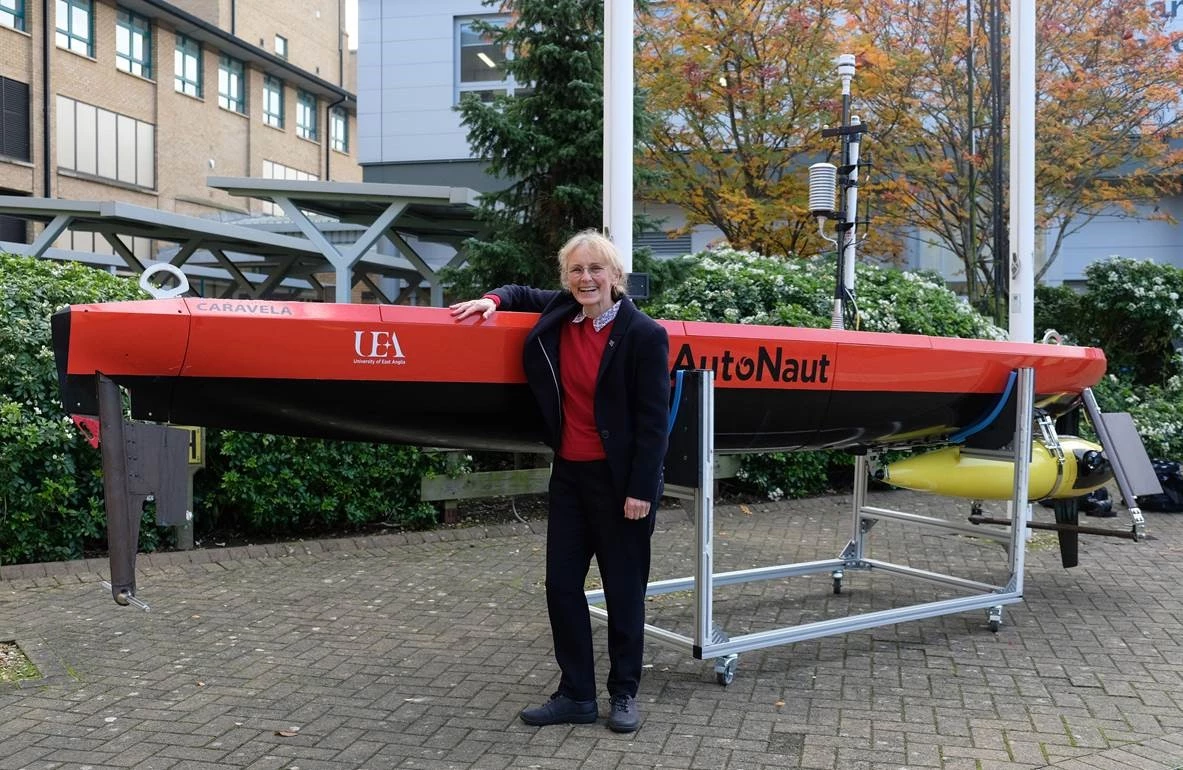While autonomous underwater vehicles (AUVs) certainly do make the gathering of oceanographic data easier, launching the things can still be a hassle. That's why scientists have developed a new system, that uses an unmanned surface vessel to deploy an AUV.
Ordinarily, AUVs are launched from a fully-crewed ship. This means that the vessel has to burn fuel and rack up other expenses as it travels out to the point of deployment. Additionally, there's always the risk of it encountering either hazardous weather conditions, or hostile parties such as pirates or foreign armed forces.
Alternatively, it is possible to launch AUVs from the shore. Doing so is logistically more complex, however, plus the submersible ends up wasting much of its battery power traveling to the area being studied.
With these limitations in mind, a team from Britain's University of East Anglia recently modified an existing unmanned surface vehicle – the AutoNaut – so that it could transport and then deploy an existing AUV known as the Seaglider. The two-part system has been named Caravela, in reference to the scientific name for the Portuguese man-o’-war "jellyfish" (which isn't actually a true jellyfish).

Caravela can easily be launched from the shore. It then proceeds to make its way to the AUV deployment site, propelled by nothing but the power of the waves. This is possible due to the fact that the AutoNaut incorporates wave foil technology, in which keel-mounted front-and-rear sprung foils harvest energy from the rise and fall of waves, converting it directly into propulsive thrust.
Along the way, the AutoNaut's solar-powered sensors gather and transmit data such as atmospheric pressure, air temperature, humidity, wind speed, and sea surface temperature. Once its onboard GPS detects that it has reached its destination, it then automatically releases the Seaglider, so that the AUV can begin its own underwater data-gathering odyssey – the submersible is capable of descending to a depth of 1,000 meters (3,281 ft), traveling for months at a time and covering thousands of kilometers.
Plans call for Caravela to be field-tested later this month, when it will be used off the coast of Barbados to study how ocean temperatures affect the layer of air above, and how winds and sunlight affect the top tens of meters of the sea.
"We can now send a Seaglider into the middle of an ocean basin without having to use a ship, and where it is too dangerous to send one," says East Anglia's Prof. Karen Heywood, who first came up with the concept. "This means we can reserve the glider battery for the science, so it will have longer endurance. It also gives us the ability to more accurately decide when to release the glider, for example ahead of the spring bloom or an extreme weather event."
Source: University of East Anglia




